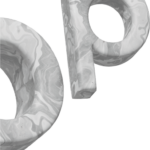

Set up your shop
Funding my project

How to manage the payments terms of your retail store?
9 June 2022
Running a successful retail business can be a challenge, but it does not have to be.
To kick off our blog launch, we will be covering some of the most frequently asked questions from our retail business entrepreneurs. In a series of articles tailored to new retailers, we will be publishing a series of articles over the next few weeks to provide important information and resources to help new retailers succeed. Please consider subscribing to our newsletter here and get up-to-date information sent directly to your inbox.
In today’s article, we will cover a topic that is central to the successful operation of your new retail business on Ankorstore. Read on as we answer the question: What are retail supply payment terms? Hundreds of thousands of entrepreneurs start up a new retail business every year in Europe and millions more dream of doing so at some point in the future.
Here at Ankorstore, we created Ankorstart to make the dreams of new retail business entrepreneurs come true. We provide best in class tools to as many aspiring retailers as possible, so they can successfully launch and operate their new business, both offline and online.
As payment terms are a critical service for new retailers and their customers, Ankorstore is passionate about making life easy for new retail entrepreneurs. In 2021, we started offering flexible payment terms for our retail customers at checkout, creating a seamless online experience. Retailers can pay later, 30 to 60 days, and pay in 3 to 4 instalments.
What are payment terms?
We are going to loosely define payment terms as rules and conditions which describe how, when and the method your customers use to provide payment to a company for goods and services offered.
Payment terms set out payment expectations, including when customers have to make payments for your business.
Payment terms are stated on your invoice. They are also connected to your inventory management in a variety of ways. We will briefly touch on inventory management later on in this article.
It is vitally important to make these terms clear to your customers. Having transparent payment conditions ensures your customers understand your billing process and, more importantly, your new retail business gets paid on time.
An invoice can make or break a new retail business. It’s really important to manage it well and have a good retail accounting. Knowing when and how to send payment terms is crucial. As the seller, you can specify how and when payment should be made, and timing your payment terms guarantees consistent cash flow for your new retail business.
Key terms to know
The success of your new retail business will partly depend on your payment terms and invoicing methods.
As we mentioned earlier, payment terms can help your new retail business receive payments on a predictable schedule.
Having a good understanding of payment terms and terminology will help you better understand the cash flow of your business, financial processes and inventory management.
Having clear payment terms and payment agreements will provide less complicated payment schedules, making for a better user experience for you and your customers and establishing a more fluid customer-client relationship.
Below are a few key terms associated with payment conditions for new retailers to get to grips with:
- Terms of sale
- Net 7, 10, 30, 60, 90
- Interest invoice
- Recurring invoice
- Vat
- Invoice factoringe
Terms of sale
In summary, these are the expectations between the buyer and the seller. Terms of sale ensure that there are no misunderstandings or possible disagreements. The two parties know what to expect of each other, and are both satisfied with the requirements outlined from the onset.
Terms of sale are the terms that you and the buyer have agreed to and accept. These terms include the cost, amount, delivery conditions, payment method and the time when the payment is due. These terms also make up the essential components of any invoice.
The terms of sale are essential in international trade since they cover when shipping occurs, and who is responsible for international tariffs, taxes, duties and any other factor established and regulated by the International Chamber of Commerce.
Net 7, 10, 30, 60, 90
This implies that net payments are due 7, 10, 30, 60 or 90 days after the invoice date. “Net” and the number following refer to the number of days within which the customer must settle the payment after the invoice date.
Interest invoice
What consequences will the customer face if they fail to pay the invoice on time? One commonly used solution is to charge interest, fees or costs on invoices.
It is important to note that when calculating interest on late payments, you only charge a fee for the number of days the payment is overdue.
Recurring invoice
A recurring invoice is an invoicing term for ongoing goods and/or services. They are typically for the same amount each month, such as a membership or subscription.
A recurring invoice is issued to the same client, usually for the same amount, at regular intervals.
Recurring invoices guarantee your business regular cash flow, saving you time having to invoice a customer every month. Everything is automated to the billing cycle. Some business owners put extra emphasis on stocking goods with longer billing cycles.
Value-Added Tax (VAT)
VAT can be charged on the pre-payment and you must pay the VAT to Revenue in your VAT return.
Invoice factoring
Invoice factoring is handy when a client/customer hasn’t paid your invoice, and you’re in urgent need of cash flow.
With invoice factoring, you hand over your invoice to an invoice factoring company. You’ll receive a percentage advance upfront, and the invoice factoring company generally charges a fee for their services. Remember to read the fine print!
Essential tips for managing starting inventory and cashflow
Good inventory management guarantees that you are always ready to provide your customers with excellent products.
Establishing the early management of good inventory is a vital part of managing a successful retail business and maintaining positive cash flow. This is because payments are vital to replenishing your inventory on time and contributing to the smooth-running of your business.
The following tips can help your business cash flow if you ensure the payment terms are agreed in writing before an order is placed or accepted.
Tips for managing starting inventory
- You negotiate the terms of payment with your suppliers in a way that allows you more time to pay than the terms in which your customers pay you, thus creating a time buffer for the starting inventory of your business.
- Improve your brand’s customer experience by establishing good inventory management. Not having enough stock to execute orders can cause oversell, leading to unfulfilled orders and unhappy clients.
- Make sure you have a firm grasp of your inventory levels to ensure healthy cash flow. Putting too much money in your starting inventory means that it is not available for other essential business needs, such as marketing or payroll.
- Effective and well-managed inventory and stocks can be selected, sorted, wrapped and shipped to customers faster and more easily. Take the time to optimise your production and fulfilment process.
Tips for cashflow
- It is better to know what to expect than to leave things to chance. Avoid wondering why the money has not arrived as planned. Establish and agree on payment terms in advance and in writing.
- If your customers consistently and repeatedly tell you that they will need more time to pay in the future, with past dues already in existence, you must decide on how important their orders are for your business.
- An excellent way of attracting the attention of late-paying customers is by sending further invoices with interest incurred and late payment charges
How to set your payment terms?
With almost half of all invoices getting paid late, it is in your interest that you put a great deal of consideration into setting up your payment terms. Since businesses mainly send invoices electronically, most payments today are made online, with longer duration payment terms becoming increasingly obsolete.
“Fun fact! Did you know that the most important payment term is the due date?”
Opt for short payment terms
It is more likely that invoices with short payment terms go past the due date, however, you still get your money sooner than if you give longer repayment periods.
Some customers expect longer payment terms for larger invoices but you can still negotiate with them for shorter payment terms.
Tips to get paid faster
Discuss the terms of payment before starting: obtaining this in advance means that there is no confusion later on. It also establishes customer expectations around payment from the beginning.
Mention payment details in your invoice in a way that makes sense for your clients. It is also good to customise your invoice with your company’s branding.
Send your invoice to your customers as soon as possible. The sooner the client receives the invoice, the faster they will make a payment. This also means they will accept it when the value of your work is still fresh in their mind.
Add a waiting fee: If you have set clear payment terms to your invoice and the client has ignored it, you have the right to charge interest. Consider applying overdue fees to your terms.
What is the cost of a starting inventory?
Your starting inventory is an essential element to determine how much money you need to fund your new retail business. This can also be one of the most difficult costs to estimate.
The inventory necessary to stock up for your store type is one of the many expenses you need to take into account when starting your new retail business. The problem is that it is very difficult to know exactly how much it will cost to fulfil the starting inventory.
At Ankorstore, it is our mission to ease this process. Let’s begin by putting facts and figures to your idea and establishing a foundational framework for your business to start growing.
In simple terms, you can typically estimate your starting inventory costs if you know some basic facts. Basic facts would include information such as the number of product items your store will stock for a period and the MSRP (Manufacturer’s Suggested Retail Price) of each of your products.
You also need to know that retail mark-ups are generally between 30 to 40%, depending on the industry and segmentation.
Let’s crunch the numbers….
Example. Let’s say you plan to sell an item that is typically sold for £9.99. Since you know the average mark-up, you can estimate that this product can cost between £4.99 and £5.99, approximately.
Multiply this by the number of these items that you plan to stock as your starting inventory in your store, and you have the cost of your first product.
Simply apply the same calculations and methods to the rest of your inventory, and you will have an approximate estimate of your starting inventory cost.
How do I finance my starting inventory?
Keeping the shelves full of what customers want to buy is sometimes a challenge for an owner of a new retail business.
Fortunately, there are now many inventory financing options that can help you keep the inventory on the shelves of your retail store positive and your cash flow under control.
There are several options for financing stocks outside of payment with cash. Here are a few popular mentions for inventory financing examples:
Line of credit
A business line of credit offers business owners the flexibility to buy inventory on credit when needed. This enables you to fund your retail inventory.
In addition, retail business owners usually do not have to pay any interest on the credit they do not use. Be sure to check the terms and conditions of any credit instrument and read the fine print.
Vendor financing
Many suppliers offer terms of payment to their customers and, often, allow them to buy inventory today and pay it at a later date, for example, 30 or 60 days.
This is not only an excellent way to finance your starting inventory, it is often one of the first credit sources available for new companies and allows business owners to build a solid base for their commercial credit profile.
FAQs
My supplier changed payment terms after the submission of invoices, is this legal?
No. Payment terms on submitted invoices cannot be changed from the invoice for an order already placed. The change in payment terms will only apply to any new invoices raised after the change is made and on a new order.
Does Net 30 payment terms include weekends?
Yes. Net 30 always includes calendar days, meaning business days, holidays and weekends. Ensure the contract you sign with your supplier makes that clear.
Can I or my supplier change payment terms?
Yes. Negotiating better payment terms for yourself means you can keep more cash in your business and improve liquidity. Also, consider your supplier’s needs if they request to renegotiate better payment terms on their part. Having fair payment terms in place ensures harmonious equilibrium between you and your supplier.
What are Net 30 payment terms?
Net 30 refers to a payment period. It means the customer has a 30-day period to pay the total amount of their invoice dues. Net 30 is one of the most common and popular payment terms. Other popular net terms include Net 60 and Net 90 for 60 and 90 days respectively.
Who gets to decide the supply payment terms?
The supplier usually proposes the payment terms. You also have every right to negotiate the supply payment terms to suit your business needs. Do thorough research and ensure you are adequately informed before committing to any contractual obligations.
How do I handle customers who repeatedly break the payment terms?
Consider introducing a late payment penalty and fee structure into your payment terms, and if they already exist, you might want to begin utilising them at this point.
Can payment terms change mid-contract, or would I need a new contract?
Yes. As long as you clearly outlined and communicated in your contact the provisions of the renegotiations. Make sure your contracts make these terms clear.
Related posts "Funding my project"

Starting a new retail adventure is an exciting time for any small business owners, but from ideation to creation is a big step: financing. Read on to learn how to find investors and secure the starting capital you need to fund your retail business.

Having the ability to calculate the break-even point can help you make key financial decisions regarding your retail store. In this guide, you will find all the required information for performing a break-even point analysis.

Creating a cash flow statement can seem daunting at first, but we’ll make it manageable with a clear example of a cash flow statement that will prepare you to better manage your retail store and ensure your finances are in-check.



